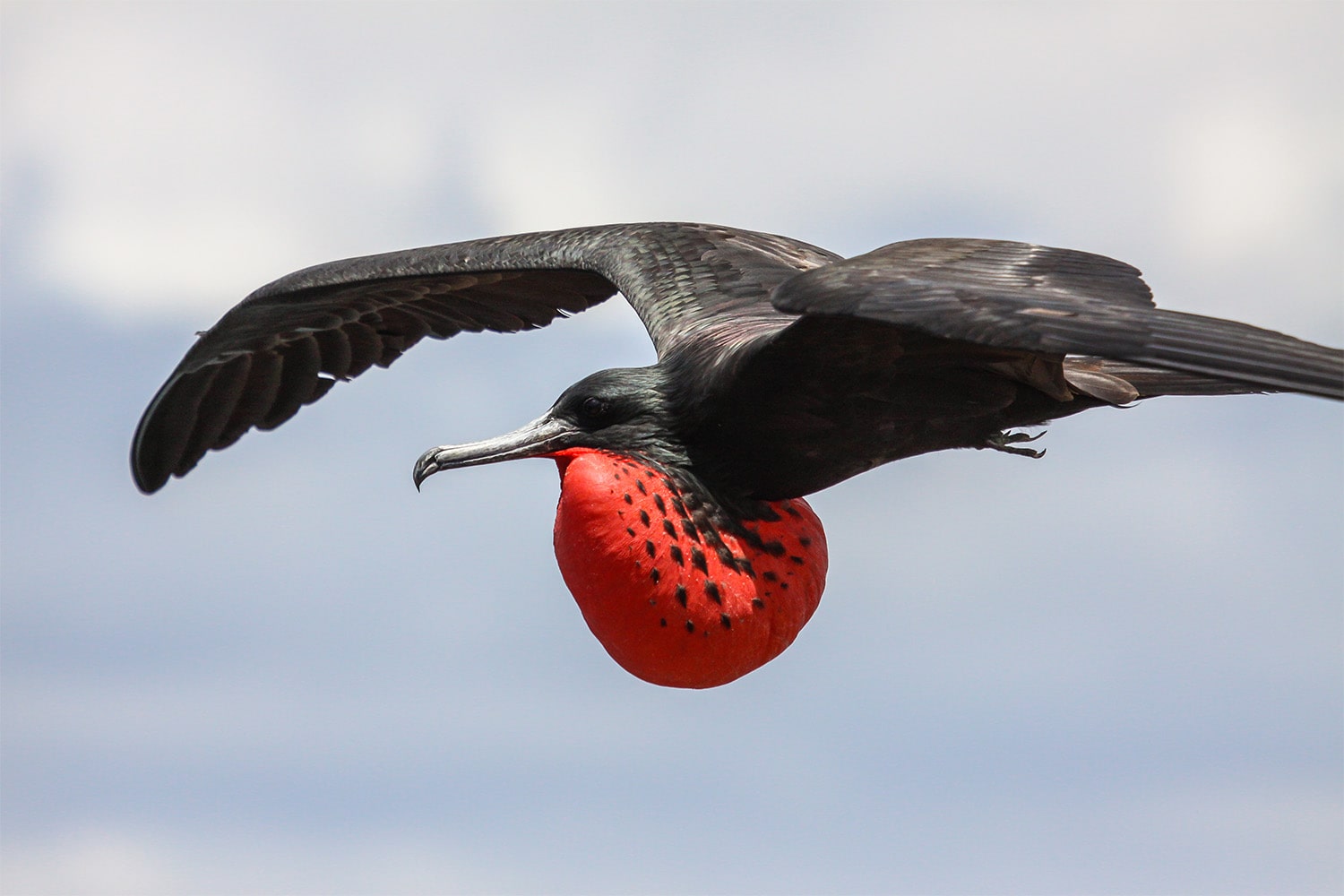
27 interesting facts about frigatebirds
- 👁️ 281
Frigatebirds, often seen soaring high above tropical and subtropical oceans, are among the most distinctive and fascinating seabirds. Known for their impressive wingspan, forked tails, and the male’s striking red gular pouch, frigatebirds are master gliders that can stay aloft for weeks at a time. These birds are not only remarkable for their aerial abilities but also for their unique breeding and feeding behaviors. Despite their prowess in the air, frigatebirds are less adept on water due to their small feet and lack of waterproofing on their feathers. Here are 27 interesting and informative facts about frigatebirds that highlight their adaptations, lifestyle, and the role they play in their ecosystems.
- Frigatebirds belong to the Fregatidae family, which comprises five species.
- They have the largest wing area to body weight ratio of any bird, allowing them to glide effortlessly.
- Frigatebirds can stay airborne for more than a week without landing.
- They are known for their piracy behavior, harassing other birds to force them to regurgitate their food.
- The male frigatebird’s red gular pouch is inflated during courtship displays to attract females.
- Frigatebirds are unable to walk well on land due to their short legs and long wings.
- They rarely swim and cannot take off from water because their feathers are not waterproof.
- Frigatebirds feed on fish, squid, jellyfish, and crustaceans picked from the ocean surface or stolen from other birds.
- The female is larger than the male and lacks the red gular pouch.
- Frigatebirds have a lifespan of up to 35 years in the wild.
- They nest in colonies on remote islands in trees or on the ground.
- Unlike most seabirds, frigatebirds do not have oil glands for waterproofing their feathers.
- The Great Frigatebird is the most widespread species, found across all tropical and subtropical oceans.
- The Magnificent Frigatebird is known for its deeply forked tail and iridescent plumage.
- Frigatebird chicks are fed by their parents for up to six months, one of the longest dependency periods of any bird.
- They have a slow reproductive rate, breeding every other year on average.
- Frigatebirds can drink fresh water by skimming the surface of freshwater lakes or ponds.
- Their main predators are introduced mammals like rats and cats on nesting islands.
- Frigatebirds have excellent vision, which they use to spot prey from high altitudes.
- The Ascension Frigatebird is considered critically endangered due to habitat loss and predation.
- During flight, frigatebirds can reach altitudes of up to 2,500 meters (8,200 feet).
- They are capable of sleeping while flying by resting one hemisphere of their brain at a time.
- Frigatebirds are found in all oceans, but they prefer warmer tropical waters.
- The name “frigatebird” was inspired by the resemblance of the birds to fast warships known as frigates.
- They are known to follow ships for long distances, likely in search of food scraps.
- Climate change poses a threat to frigatebirds by affecting their breeding sites and food availability.
- Frigatebirds play a crucial role in their ecosystems as top predators and by controlling the populations of their prey species.
Frigatebirds are truly marvels of nature, combining incredible aerial abilities with unique ecological behaviors. Their mastery of the skies, intricate mating rituals, and piratical feeding habits make them a subject of endless fascination and admiration. These 27 facts offer just a glimpse into the lives of these extraordinary birds, emphasizing their importance in the marine ecosystems they inhabit. Protecting frigatebirds and their habitats is essential to preserving the biodiversity of our oceans and the natural beauty they represent.
Frigatebirds, often seen soaring high above tropical and subtropical oceans, are among the most distinctive and fascinating seabirds. Known for their impressive wingspan, forked tails, and the male’s striking red gular pouch, frigatebirds are master gliders that can stay aloft for weeks at a time. These birds are not only…